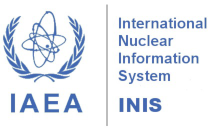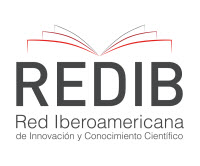New article published in 12(4B) - ENFIR/INAC 2024
Research Collaboration Dynamics at the National Nuclear Energy Commission (CNEN): Pathways to Enhance Economic and Social Impact
Abstract: The growing recognition of university-industry collaborations as a strategic alternative for economic and social development at regional and national levels has fostered a continuous academic (and political) debate. Moreover, university-industry collaboration emerges as a strategic pathway for research production, particularly in developing and emerging countries. However, there is a scarcity of studies on university-industry collaboration oriented towards research production, as well as on its respective impacts, especially economic and social ones. To help fill this gap, this research examined the dynamics of research collaboration of the National Nuclear Energy Commission (CNEN), as well as its respective scientific, economic, and social impacts over the past three decades – the longest available data series, which adds originality and novelty to the research. Based on a descriptive and evaluative informetric analysis of internationally indexed publications in the Scopus (Elsevier) database, accessed through the SciVal platform, it was found that publications co-authored by CNEN with industry, government, and international actors, although less frequent, achieved greater resonance and influence in international knowledge networks, attracted more attention and interest from the international community, significantly exceeding the average expectation for similar publications, and exerted a more significant influence on patentable technologies and public policy formulation. These results may be useful for informing policies, guiding pathways to increase the prolificacy and impact of research. Read full article.
Use of clays in the treatment of radioactive aqueous waste generated at the CDTN
Abstract: Radioactive waste is generated in various activities carried out by industry, whether focused on agriculture, energy, health, or research development. CNEN defines it as all materials with radionuclides above clearance levels, generated by human action, whose use is inappropriate or not foreseen. Proper management is essential to ensure the population's safety, workers occupationally exposed to radiation, and the environment. The research by institutes that develop nuclear technologies generates solid and liquid radioactive waste. To reduce their volume, solid waste is compacted or immobilized in a cement matrix, and liquid waste is treated in such a way as to concentrate the radionuclides present and separate them from the liquid part to release this liquid part in the environment, according to the acceptance criteria of CNEN standard. There are several ways to treat liquid waste, such as precipitation, sorption, ion exchange, membrane filtration, and evaporation. In this work, the precipitation followed by sorption in commercial clays of some liquid radioactive waste generated through research carried out at the Nuclear Technology Development Center was evaluated to reduce the radionuclides content in the aqueous part and concentrate the radionuclides in the clays used. Read full article.






















